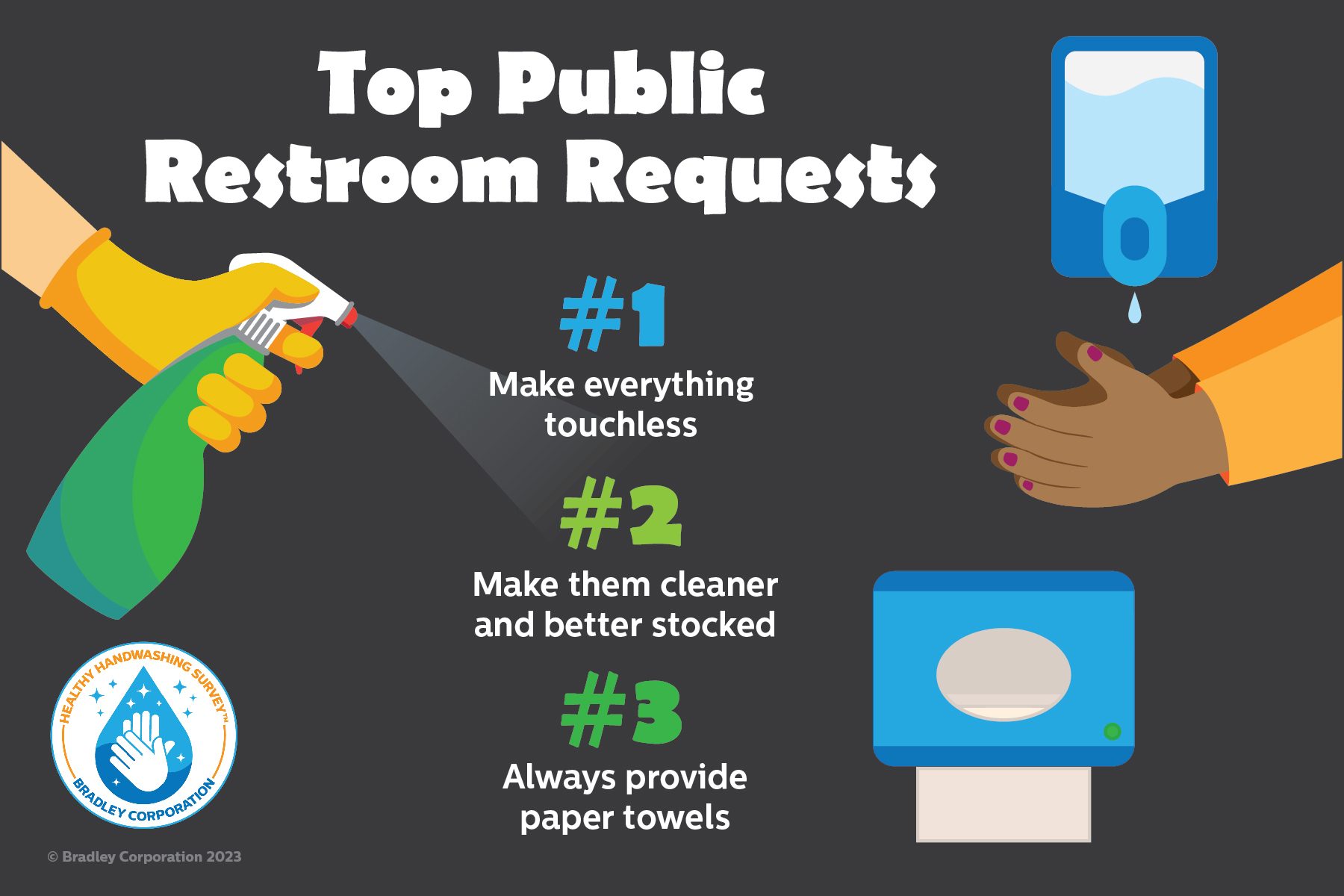commercial
Hygiene drives 2023 commercial bathroom trends
Hygienic restroom solutions improve cleanliness and maintenance, elevate aesthetics and attract customers.
By: Kris Alderson
According to Bradley's Healthy Handwashing Survey, 82% of customers want touchless fixtures in public restrooms, and 59% are more likely to return to a business that has touchless fixtures.
Attitudes and expectations for commercial restrooms have significantly shifted over just the past few years. Societal factors such as the COVID pandemic, technology advancements, efficiency and sustainability goals, inclusivity and accessibility have altered the way people view – and use – restrooms.
In 2023, hygiene sits squarely on top of the restroom priority list. While people have always valued clean and stocked restrooms, there’s an even higher expectation now for enhanced restroom maintenance. Americans not only want restrooms to look and smell clean, they seek appealing and welcoming spaces that are easy to use for people of all physical capabilities, ages and genders.
According to the Healthy Handwashing Survey conducted by Bradley Corporation, end users are so sensitive to the cleanliness of restroom environments, they will even put their money behind it. 60% of Americans said they would willingly spend more money at a business with clean, well-maintained restrooms. Another 60% say when out running errands they take restroom breaks at a business they know has “good” restrooms.
Conversely, the same percentage of people said they will avoid a business that has an unclean or unkempt restroom.
In addition to meeting end-user expectations for hygiene, operational efficiency is another key goal for restrooms. Over-stretched maintenance staff are on the lookout for restroom products, technologies and features that optimize maintenance, cut costs and make their jobs easier. Sustainable product designs like all-in-one handwashing models that reduce maintenance and paper towels can help maximize efficiency. Restroom products with maintenance indicators, IoT connectivity, A/C power (vs. batteries) and vandal resistance features also greatly improve and simplify maintenance.
While expectations and performance specs for washrooms remain elevated, the hygiene and performance of today’s products, materials and layout strategies have followed suit. Here are trends in restroom design and construction that designers and specifiers might consider:
For sinks, using smooth and nonporous materials with seamless construction like solid surface and natural quartz are hygienic, sustainable and visually stunning.
High demand for touchless restroom fixtures
The days of handled and levered faucets in restrooms are numbered. Due to human factors like germ aversion, ease-of-use and convenience, people simply prefer not to touch fixtures while using them – especially right after they just used the toilet. To illustrate people’s dislike of touching germs, Bradley’s survey found that people take a variety of evasive measures in restrooms.
62% use a paper towel to avoid touching toilet flushers and faucet and door handles. 43% operate the flusher with their foot, especially women. 31% hover over the toilet seat and 27% open and close doors with their behind to eliminate contact.
With so much effort going into evading germs, it’s no wonder that 82% of adults believe it is important to have touchless fixtures in a public restroom. 60% say they are more likely to return to a business that offers no-touch capabilities in its restrooms.
In fact, Americans view touch-free technology as the number one feature that makes them feel safer from germs in restrooms. Besides keeping restrooms cleaner and better stocked, having touchless restroom fixtures is among Americans’ most requested improvement in restrooms.
The top touchless restroom features considered most important are faucets, flushers, soap dispensers, paper towel dispensers and restroom entrance doors – in that order.
In just the past few years, the mechanicals used in sensored technology have been significantly improved. While some older touchless models include sensors that deliver spotty soap and water activations, today’s designs incorporate advanced sensing technology ensuring continuous and reliable washing, and less soap splotches leftover in and around the basin.
From an operational efficiency standpoint, touchless fixtures are easier to keep clean, maintain and service than manually activated fixtures. While automated technologies may require some modifications to the existing plumbing and electrical systems, they are often relatively straightforward for retrofitting into a current restroom space.

Commercial restrooms are adopting the elevated, luxury design of residential spaces.
All-in-one handwashing models improve maintenance and style
One new touchless strategy that boosts operational efficiency, sustainability and aesthetics is combining soap, faucet and hand dryer into the handwashing system. One popular handwashing system houses touchless soap, water and hand dryer in a sleek and durable cast metal fixture on top of the sink, eliminating clutter of separate handwashing components.
This all-in-one handwashing concept also helps improve water containment in the handwashing basin. Specifically, the hand dryer is engineered to work with the basin to keep water in the basin and prevent water from dripping from hands onto the user, walls and floors, which is maintenance intensive and can cause slips and falls.
This integrated design improves accessibility and convenience for users while saving on maintenance time and costs with fewer soap refills, the elimination of paper towels, less wet floor clean up and less time emptying waste bins.
Head off microbial growth with beautiful surface materials
For sinks, using smooth and nonporous materials with seamless construction like solid surface and natural quartz are hygienic, sustainable and visually stunning. With an array of earthy color selections that mirror our natural surroundings, these sustainable basins help bring the outdoors into restroom spaces for a grounding and calming effect.
From a hygiene standpoint, solid surface and quartz help prevent bacteria and mold accumulation and growth, and can be easily cleaned, disinfected, repaired, reused and last the life of the building. Look for cast-formed basins as these materials have no unsightly seams or gaps and may be specified in a number of attractive shapes and forms. Natural quartz and solid surface materials can be GREENGUARD GOLD-certified.
For soap and faucet fixtures, PVD coatings are not only a more sustainable way to finish metals than traditional electroplating, they are inherently antimicrobial. These popular and attractive finishes are produced with physical vapor deposition (PVD), an advanced process that creates a molecular bond to the fixture, creating a resilient coating that will not corrode or fade. Colors like brushed black stainless, bronze, brass and nickel add modern accents and character to restroom designs.

Inclusive layouts call for privacy and space
While separate men’s and women’s restrooms will continue, the addition of gender-neutral bathrooms is seeing a rise in popularity. Adequate floorspace is often needed to accommodate all-gender restrooms.Some design options for inclusive restrooms include individual rooms with locking doors or a larger communal space with separate stalls.
One popular layout is based on European restroom models with gender-neutral layouts that form a perimeter around communal washing stations to facilitate one-way traffic and minimize cross-traffic. Corridor concept entries and exits, as well as automated doors, are also design considerations.
User privacy is essential for bathrooms designed for use by all genders. The IAPMO/ANSI/CAN Z124.10 standard specifies the level of privacy and security for the users of water closets and urinals. This standard addresses the need for partitions to minimize the open space between stalls, use of occupancy indicators on stalls and doors that lock to support privacy.
Both plumbing codes — International Plumbing Code (IPC) and Uniform Plumbing Code (UPC) — have accepted the concept of all-gender restrooms, meaning we are universally moving away from men’s and women’s restrooms. Still, while building designers and code councils are working toward more inclusive, private, accessible and ADA compliant restroom spaces, in general, the process has been slow going and many local building codes have not yet caught up to these changes.
Partition styles have also been modernized to feature more privacy, flush finishes, durable construction and advanced features to improve the restroom experience.
Capture the feeling of privacy and comfort
New restroom partitions are another way to add beautiful backdrops to washroom spaces. There are a variety of attractive and durable materials being offered for partitions today such as phenolic, enameled tempered glass, recycled plastic and stainless steel. Partition styles have also been modernized to feature more privacy, flush finishes, durable construction and advanced features to improve the restroom experience.
Bradley’s research shows that almost half of Americans are uncomfortable or bothered by the small gap between doors and pilasters in restroom partitions. With privacy being a key user preference in restrooms, new partition models eliminate unpleasant gaps between doors and pilasters, providing a more private retreat.
In 2023, manually operated, clustered, institutional-looking commercial restrooms have officially become an artifact of the past. Today’s restrooms convey beauty, architectural style, ease-of-use, inclusivity and privacy. Handwashing stations that are designed with sleek no-touch fixtures; all-in-one handwashing models; materials and finishes inspired by nature; private yet stylish restroom stalls…. There are a number of strategies and product models that create modern, clean and welcoming restroom spaces for all.
Kris Alderson, MBA, LEED AP, is a senior marketing manager for Bradley Corporation, a global manufacturer of commercial restroom equipment.
Images courtesy of Bradley Corporation.




